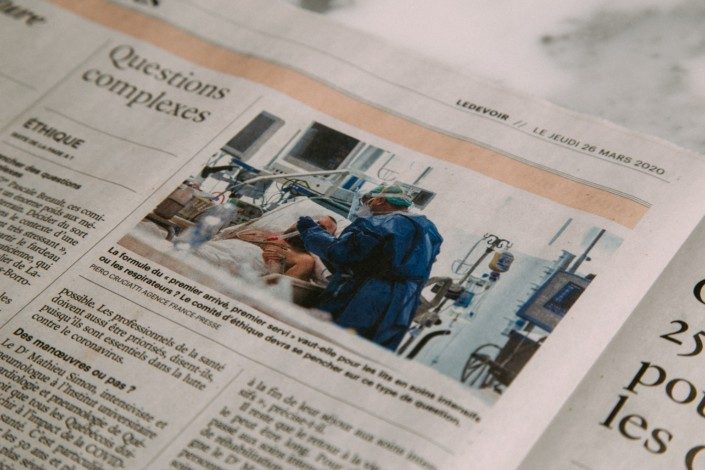With the proliferation of disinformation, it has become increasingly difficult to differentiate fact-based stories and “fake news.” In this article, Reporters Without Borders (RSF) suggests seven questions to ask oneself to ensure a story’s trustworthiness.
Disinformation has become a mounting challenge for any reader who wants to find fact-based and reliable information, especially with the refinement of Artificial Intelligence that can produce realistic fabricated stories or fake images. To assess whether a piece of news is trustworthy, here are seven key questions that should be raised every time.
1. Is the media outlet real and reputable?
An outlet that has already published inaccurate or unethical stories in the past has high chances of doing it again. Conduct a quick online search on the history of the media outlet, and check whether it is really what it claims to be. Some media mimic the logo and layout of well-known news outlets, so you also need to carefully check the website’s URL and the “About” section.
2. Is the author a real and reputable person?
Similar to the credibility of the entire website, the story’s author also matters. Do they even exist? Are they known for publishing sensationalist pieces, or for their professional ethics? Conduct a quick online search on their name and reputation. The media outlets they usually work with are generally another indicator of credibility.
3. Are the sources accurate and reliable?
A trustworthy story has reliable sources quoted throughout the article. Check whether the linked sources come from legitimate websites or platforms, are authored by real writers, and corroborates what the story’s author claims.
4. Is the story a joke?
Some stories are purposely false because they intend to satirise and entertain. You should check whether the website, the author and the sources are known for parody and satire. The publication date may also play an important role: any piece of news published on April Fools’ Day should be approached with caution.
5. Does the headline support the content?
Emotionally exploitative headlines drive engagement on social media and in search engines, but may not actually reflect the content of the article. Read the story carefully and do not share a post just because of a catchy headline.
6. Are the photos real and in-context?
“Fake news” stories often contain manipulated photos or photos that are taken out of context. Use a reverse image search – finding on the web its exact copies and related images, based on the recognition of the elements in it – to check the origin of a photo and its context.
7. Do the dates make sense?
Pay attention to timelines and whether they make sense. Be aware that sometimes old, outdated stories are pushed back onto social media as if they were new. If so, older versions of the story will appear in internet searches.



